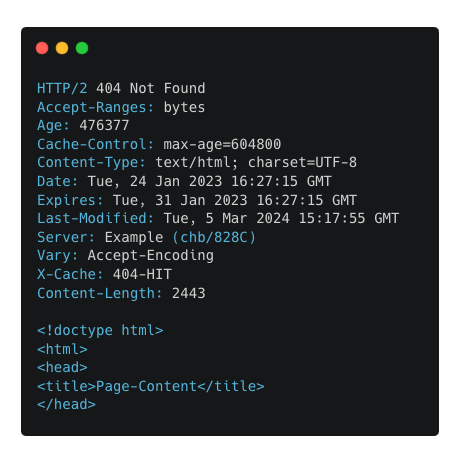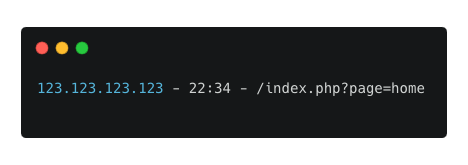What Is a CRLF Injection Attack?
A Carriage Return Line Feed (CRLF) injection attack, also referred to as an HTTP response splitting attack, is a type of cyber threat that manipulates the carriage return and line feed special characters found within a web application’s HTTP header. This type of attack can lead to various adverse consequences, ranging from cross-site scripting and cookie injection to phishing attacks and web cache poisoning.
By adding undesired CRLF characters into an HTTP header, attackers can modify the header or inject malicious content into a web page. The attacker targets the inherent way that HTTP responses are formed and interpreted. By injecting extra CRLF sequences into the input data, the attacker can split the HTTP response header and control the data that follows it.

Another variation of the CRLF attack is to inject CRLF characters into logs, which can help attackers cover their tracks by obscuring logs of unauthorized behavior.
This is part of a series of articles about application security
Key Concepts of CRLF Injection
Injection Mechanism
The injection mechanism of a CRLF injection attack is relatively straightforward. The attacker injects a CRLF sequence (%0D%0A, or \r\n in ASCII) into the user input data, thereby injecting arbitrary HTTP headers or splitting the HTTP response into two. The CRLF sequence terminates a line and starts a new one in many text-processing protocols, including HTTP.
HTTP Response Splitting
HTTP Response Splitting involves manipulating the HTTP response headers and body by injecting CRLF characters, allowing an attacker to create multiple HTTP responses from a single HTTP response. This can be exploited in various ways, including setting arbitrary HTTP headers or splitting the response content.
Log File Tampering
Log File Tampering through CRLF Injection allows an attacker to insert arbitrary entries into application logs by including CRLF sequences in user input. This can render logs unreliable, complicating the efforts of system administrators to track and understand activities within the system. By crafting input that appears as multiple log entries, attackers can create a false trail, hide their activities, or implicate innocent parties.
The Consequences of CRLF Attacks
Cross-Site Scripting (XSS)
CRLF Injection attacks can lead to a wide array of consequences, one of which is Cross-Site Scripting (XSS). XSS is a type of security vulnerability that can enable attackers to inject malicious scripts into web pages viewed by other users. In the context of CRLF Injection, an attacker may manipulate the HTTP headers to inject a script into the victim’s browser, leading to an XSS attack.
The damage caused by XSS can vary in severity. In a minor case, it may lead to non-critical data leakage or defacement of the website. However, more severe cases may see the attacker gaining unauthorized access to sensitive data, or even seizing control over the victim’s interactions with the website.
Cookie Injection
Another consequence of CRLF Injection attacks is cookie injection. In this scenario, an attacker can manipulate the HTTP headers to insert additional Set-Cookie header fields. This could allow the attacker to alter the victim’s cookies, potentially leading to unwanted behavior.
For instance, the attacker may set a cookie for a different domain, or modify an existing cookie to change the user’s settings. This could lead to unauthorized access to the user’s account, or even identity theft.
Phishing Attacks
CRLF injection attacks can also lead to phishing attacks. By manipulating the HTTP headers, an attacker may redirect the victim to a malicious website, or replace the content of the current web page with the attacker’s malicious content. The malicious web page may then attempt to trick the victim into providing sensitive information, such as passwords or credit card numbers.
Phishing attacks are a serious threat, as they can lead to unauthorized access, and in severe cases, financial loss or identity theft.
Web Cache Poisoning
An attacker could use CRLF Injection to manipulate the HTTP headers and modify the cache control headers, leading to the caching of malicious content. This could affect all users who access the cached content, potentially leading to widespread harm. Web cache poisoning can be difficult to detect and prevent, as it involves both the web application and the caching proxy.
Types of CRLF Injection Attacks with Examples
CRLF Injection in a Log File
CRLF Injection in a log file can seriously compromise the integrity of log data, making it challenging to track user activity or detect malicious behavior accurately. In this scenario, an attacker exploits the structure of log files to inject misleading or false information. For example, a standard log entry might look like this:

An attacker, by injecting CRLF characters (%0D%0A, URL encoded as %0d%0a) into an HTTP request, can manipulate the log file’s content. This is done by appending the encoded CRLF characters followed by a fake log entry into the request’s query string.
The server, when logging this request, interprets the CRLF characters as a line terminator and starts a new line, leading to a log entry like:

In this manipulated log entry, the attacker’s actions appear as if they originate from a trusted source (localhost, 127.0.0.1), obscuring the actual source of the malicious activity.
HTTP Response Splitting
HTTP Response Splitting occurs when an attacker is able to insert a CRLF sequence into an HTTP response header. This can be used to add arbitrary headers, control the response body, or even split the response into two separate responses.
For example, consider a scenario where user input is directly included in an HTTP header without proper sanitization. An attacker could provide input like this:

This would cause the server to treat the subsequent input as a new HTTP response, potentially leading to cache poisoning, XSS, or other attacks.
HTTP Header Injection
HTTP Header Injection is similar to HTTP Response Splitting but focuses specifically on injecting malicious headers. For instance, an attacker might inject a Set-Cookie header, forcing the user’s browser to store a cookie that the attacker controls.
Consider a scenario where user input is added to a header without adequate sanitization. An attacker could input a malicious code and potentially taking over a user’s session.

Memcached Injection
Memcached injection involves injecting CRLF characters into values to be stored in Memcached or similar caching systems. This can corrupt or manipulate cached data, affecting application behavior or poisoning cache with malicious data.
For example, an attacker might attempt to store a value aiming to manipulate or corrupt Memcached cache entries.

Preventing CRLF Injection Attacks
Never Use User Input Directly in the HTTP Stream
Unsanitized user input is one of the most common sources of web application vulnerabilities. It might be convenient to use user input directly in HTTP streams. However, this can lead to CRLF injection (and other serious security issues) if not properly handled. An attacker can input data that, when incorporated into the HTTP stream, alters its structure or behavior. This alteration can lead to unauthorized access, data theft, and other harmful outcomes.
To prevent this, never trust user input implicitly. Always treat it as a potential source of vulnerability. Ensure that user input is properly sanitized and validated before it is used in HTTP streams.
Remove or Encode CRLF and Newline Characters
Another way to prevent CLRF attacks is to encode the CRLF characters in the user input. Encoding transforms these characters into a format that the server does not recognize as a line break. This ensures that even if an attacker manages to inject these characters into the user input, they will not be able to alter the HTTP headers.
Newline characters are another way for attackers to inject CRLF sequences into the HTTP headers. These characters signify the end of a line and can be used to manipulate the structure of the HTTP stream. To prevent this, remove newline characters from user input before passing them into HTTP headers.
Disable Any Unnecessary/Unused Headers in the Web Server
Every HTTP response includes a series of headers that provide information about the response. Some of these headers may not be necessary for your application and can be safely disabled.
Disabling unnecessary headers reduces the points of vulnerability in your application. It limits the potential for attackers to manipulate these headers and conduct a CRLF injection attack.
Remove CRLF from Data Before Logging it
Logging user data can be a useful practice for tracking and debugging purposes. However, it can also serve as a point of vulnerability for CRLF injection and other attacks.
Before logging user data, ensure that any CRLF sequences are removed. This prevents the potential for these sequences to be logged and later used to manipulate the HTTP headers.
CRLF Protection with Imperva
Imperva’s Web Application Firewall can prevent CRLF attacks with world-class analysis of web traffic to your applications.
Beyond the WAF, Imperva provides:
Runtime Application Self-Protection (RASP) – Real-time attack detection and prevention from your application runtime environment goes wherever your applications go. Stop external attacks and injections and reduce your vulnerability backlog.
API Security – Automated API protection ensures your API endpoints are protected as they are published, shielding your applications from exploitation.
Advanced Bot Protection – Prevent business logic attacks from all access points – websites, mobile apps and APIs. Gain seamless visibility and control over bot traffic to stop online fraud through account takeover or competitive price scraping.
DDoS Protection – Block attack traffic at the edge to ensure business continuity with guaranteed uptime and no performance impact. Secure your on premises or cloud-based assets – whether you’re hosted in AWS, Microsoft Azure, or Google Public Cloud.
Attack Analytics – Ensures complete visibility with machine learning and domain expertise across the application security stack to reveal patterns in the noise and detect application attacks, enabling you to isolate and prevent attack campaigns.
Client-Side Protection – Gain visibility and control over third-party JavaScript code to reduce the risk of supply chain fraud, prevent data breaches, and client-side attacks.













